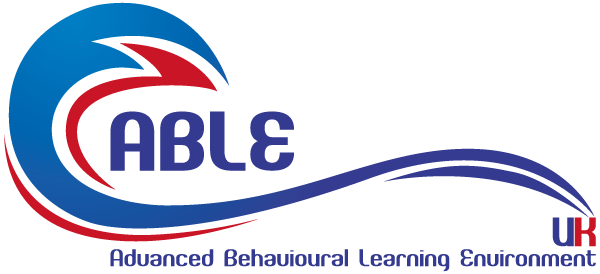How ABA Therapy Supports School Readiness in Children with Autism

Starting school is a significant milestone for any child, but for children with autism, it can be particularly challenging. The structured environment, social interactions, and academic demands require a level of adaptability that may not come naturally to them. This is where Applied Behaviour Analysis (ABA) therapy plays a crucial role. This is more so in a city like Dubai, where school placement is an important milestone for a child and might require pre-planning to secure the desired placement for your child in the difference schooling options and curriculum available on Dubai.
ABA therapy focuses on developing essential skills that help children transition smoothly into a school setting. By addressing communication, socialization, emotional regulation, and learning strategies, ABA therapy ensures that children with autism are better equipped to succeed in the classroom.
School readiness is more than just knowing letters and numbers. It encompasses a child’s ability to interact with peers, follow instructions, manage emotions, and engage in learning activities. ABA therapy supports this process through a structured, evidence-based approach that fosters skill development in key areas. There are several ways ABA therapy can support your child in preparing for and enrolling in a structured school environment. Let’s explore some of these.
Enhancing Communication Skills
One of the most common challenges for children with autism is communication. ABA therapy helps by teaching verbal and non-verbal communication strategies, ensuring that children can express their needs, understand instructions, and engage with teachers and classmates effectively. Techniques such as Picture Exchange Communication Systems (PECS) and speech interventions are commonly integrated into ABA programs to support these skills.
ABA therapy improves communication in autistic children by breaking down complex skills into smaller, teachable steps. Positive reinforcement is used to encourage desired behaviours, and structured methods like Discrete Trial Training and Verbal Behaviour focus on the mechanics and purpose of language. With the support of the therapists, these skills are then practiced in natural settings to promote generalization.
Individualized plans and meticulous data tracking allow therapists to tailor and adjust strategies, ensuring that each child’s specific communication challenges are addressed effectively. This approach fosters a gradual but significant enhancement of communication abilities, enabling children to better express themselves and interact with their environment.
Improving Social Interactions
Navigating social situations can be overwhelming for children with autism. ABA therapy introduces structured play activities, role-playing scenarios, and reinforcement strategies to teach children how to interact with their peers. This helps them learn critical skills such as taking turns, making eye contact, and responding appropriately in conversations.
Learning these social skills is crucial for helping the children settle into a school environment and interact with their peers.
Encouraging Behavioural Regulation
School environments can be unpredictable, making it essential for children with autism to develop self-regulation skills. ABA therapy uses positive reinforcement to encourage desired behaviours while teaching coping mechanisms for managing frustration, anxiety, and sensory sensitivities. By reinforcing positive behaviour patterns, children gain confidence in handling new experiences and challenges.
For example, a child who has difficulty waiting their turn in class might struggle with impulsive behaviour, such as interrupting the teacher or grabbing materials from peers. An ABA therapist would break down the skill of waiting into smaller, achievable steps and use visual supports (like a countdown timer or a “wait” card) to help the child understand the expectation.
Each time the child successfully waits for their turn, they receive a reinforcer, this could be verbal praise, a small reward (like a sticker or a preferred toy), or even access to a favourite activity. Over time, as the child consistently practices and experiences success, the therapist gradually fades the external reinforcements to encourage intrinsic motivation and independent self-regulation.
This approach helps the child learn patience, impulse control, and appropriate classroom behaviour, making it easier for them to participate successfully in a school setting.
Building Learning and Academic Skills
Academic success requires focus, attention, and the ability to follow instructions. ABA therapy tailors learning strategies to the child’s individual needs, helping them grasp foundational concepts and stay engaged in classroom activities. Therapists use structured teaching methods, including discrete trial training (DTT) and task analysis, to break down complex tasks into manageable steps.
By focusing on foundational and pre-academic skills essential for classroom success, ABA therapy helps prepare children with autism for the structured learning environment at schools. It systematically teaches attention, instruction following, and pre-literacy/numeracy skills, while also addressing social interaction deficits through targeted interventions. Organizational skills and language development are emphasized to mirror the structured school environment.
Therapists tailor individualized plans, utilize data-driven methods for progress tracking, and manage challenging behaviours to enhance learning. Skills are practiced across various settings to ensure generalization, and transition support is provided to simulate classroom experiences, ultimately facilitating a smoother and more successful school entry.
Parental Involvement in ABA Therapy
Parents participation in collaboration with the therapists plays a crucial role in offering a well-balanced care for the child. Parents play a vital role in reinforcing the progress made during ABA sessions. Therapists often provide training and resources to help parents implement ABA strategies at home. By creating a consistent learning environment, parents can support their child’s development and reinforce positive behaviours in everyday situations.
In conclusion, ABA therapy can be a powerful tool in preparing children with autism for school. By focusing on communication, socialization, behaviour regulation, and academic readiness, ABA therapy equips children with the skills they need to thrive in an educational environment. With the right support, children with autism can experience a smoother transition into school, setting them up for a lifetime of learning and growth.
